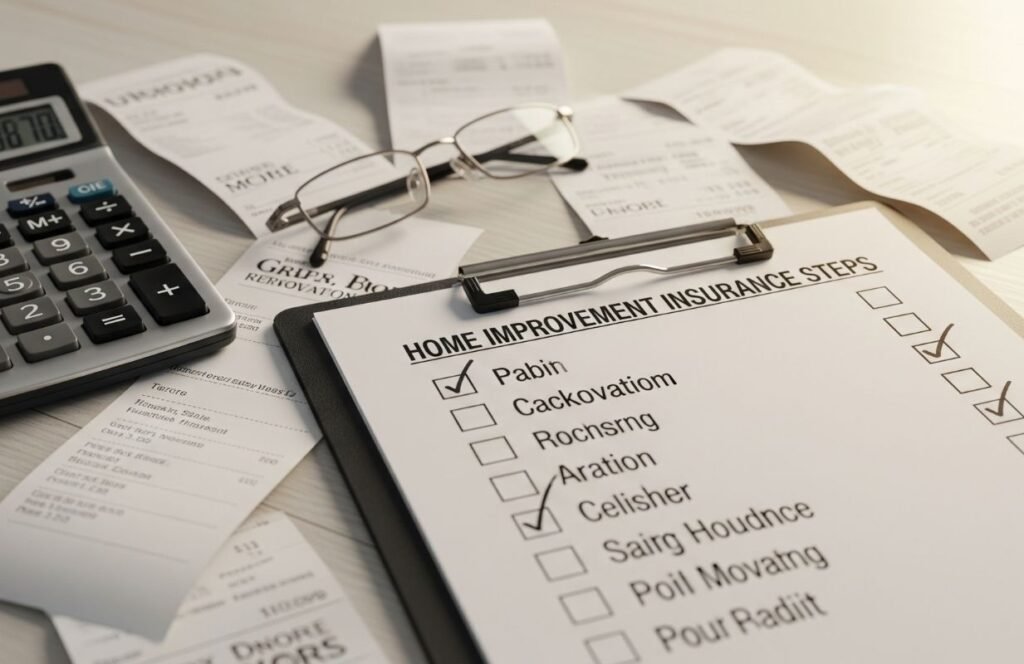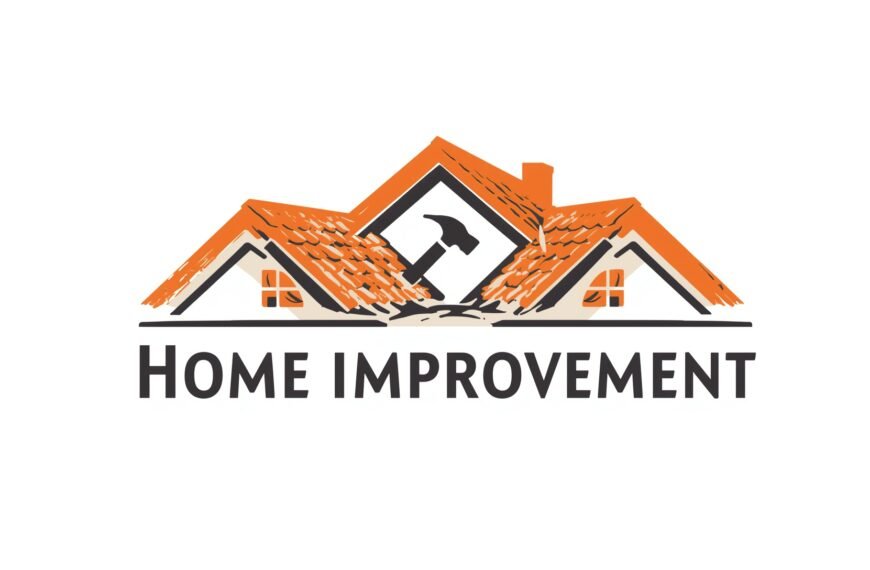Home improvement insurance is one of the most important safety nets for anyone upgrading, renovating, or remodeling a property. Whether you’re a homeowner, landlord, or contractor, having the right coverage protects you from unexpected costs if things go wrong during a project. Without it, a single accident or mistake could lead to major financial losses.
If you’re searching for home improvement insurance for a new project, you probably have questions. What does it cover? How much does it cost? Which companies offer it? In this guide, we’ll explain everything you need to know, from basic definitions to tips for finding the best coverage in your state.
What Is Home Improvement Insurance?

Home improvement insurance is a type of coverage that protects people and property during renovation or construction projects. It’s designed to cover risks that might occur during home upgrades, such as damage to the property, theft of materials, or injuries to workers.
This insurance is not a single policy but a category that can include:
- Homeowners policy updates – to reflect your property’s new value after improvements.
- Builder’s risk insurance – for protection during ongoing construction.
- Contractor’s liability insurance – to safeguard against claims from accidents or damage caused by contractors.
When searching for home improvement insurance companies, you’ll notice different types of coverage depending on who is buying the policy and the scale of the project. Homeowners, contractors and even subcontractors may each need their own policies.
Why Is Home Improvement Insurance Important?
Renovations often involve multiple people, expensive materials and complex work. Even with careful planning, accidents can happen. Here’s why coverage matters:
Protects Against Property Damage
During renovations, walls might get damaged, floors scratched, or pipes broken. Insurance ensures repair costs are covered.
Covers Injuries on Site
If a worker, visitor, or even a neighbor gets injured during your project, liability coverage can pay for medical bills and legal fees.
Prevents Out-of-Pocket Losses
Without insurance, you’d have to pay for damages or accidents yourself — which can easily run into thousands of dollars.
Meets Legal and Contract Requirements
In some states, like Florida and California, certain home improvement projects require proof of insurance before work can start.
Builds Trust With Clients
For contractors, having home improvement insurance for contractors shows professionalism and protects against disputes.
Types of Home Improvement Insurance
Understanding the different coverage types will help you choose the right one for your situation.
Homeowners Policy Updates
If you’re making big improvements — like adding rooms or upgrading a kitchen — your property value increases. You may need to update your dwelling coverage to reflect the higher rebuilding cost.
Builder’s Risk Insurance
This covers materials, tools, and structures during the construction period. It’s essential for projects involving major changes or new additions.
Contractor’s Liability Insurance
If you’re hiring professionals, make sure they have this coverage. It protects you from claims if they damage your property or someone is hurt.
Specialized State Policies
Some states have unique insurance requirements. Home improvement insurance Florida often focuses on hurricane protection, while home improvement insurance California may address earthquake risks.
Step-by-Step Guide to Getting Home Improvement Insurance

Finding the best coverage isn’t complicated if you follow the right steps.
Step 1: Assess Your Project Needs
Think about the size and scope of your renovation. Are you just replacing cabinets or building an extension? Bigger projects require more coverage.
Step 2: Talk to Your Current Insurer
Your existing homeowners policy may already include some protection, but you might need to increase limits or add special coverage.
Step 3: Get Multiple Quotes
Compare offers from different home improvement insurance companies. Look at coverage limits, exclusions, and not just price.
Step 4: Check Contractor Coverage
If you’re hiring contractors, confirm they have liability and workers’ compensation insurance. Ask for proof before work begins.
Step 5: Review State Regulations
Requirements differ between states. In Florida, for example, hurricane-related damage must be considered. In California, seismic safety might be a priority.
Step 6: Finalize and Keep Records
Once you choose a policy, keep copies of your insurance documents, contracts, permits, and before-and-after photos of the property.
Home Improvement Insurance Cost
The home improvement insurance cost varies based on:
- Project size and duration
- Property value
- Location and risk factors
- Type of coverage (homeowners update, builder’s risk, contractor’s policy)
On average, builder’s risk policies may cost 1%–5% of the total renovation budget. Updating a homeowner policy may add only a small amount to your annual premium, but costs are higher for high-risk areas like coastal Florida.
Finding the Best Home Improvement Insurance

Choosing the best insurance involves more than picking the lowest price. Look for:
- Companies with strong financial ratings
- Clear, easy-to-understand policies
- Good customer service reviews
- Experience in handling renovation-related claims
Home Improvement Insurance in Florida
Florida homeowners face unique risks from hurricanes, flooding, and high winds. If you’re planning upgrades, ensure your policy includes:
- Windstorm and flood protection
- Coverage for materials stored outside
- Extra living expenses if your home becomes unlivable during repairs
Local insurers and national companies with Florida expertise can help you navigate these requirements.
Home Improvement Insurance in California
In California, earthquake and wildfire risks make coverage choices different. Consider:
- Adding earthquake insurance if your area is prone to seismic activity
- Upgrading fire protection coverage for homes in high-risk zones
- Verifying contractors follow state licensing and insurance rules
Some home improvement insurance companies in California specialize in rebuilding after disasters, which can be valuable for homeowners.
Mistakes to Avoid When Buying Home Improvement Insurance

Many homeowners and contractors make the same errors:
- Not telling their insurer about major renovations
- Underestimating the value of improvements
- Hiring uninsured contractors
- Skipping specialized coverage for state-specific risks
- Forgetting to keep detailed documentation
Conclusion
Home improvement projects are exciting, but they come with risks. Home improvement insurance ensures that you, your property, and everyone involved are protected if something unexpected happens.
From small upgrades to full-scale renovations, the right policy can save you from financial stress. Whether you’re in Florida, California, or anywhere else, take the time to choose coverage that fits your needs.
FAQs
What is home improvement insurance?
It’s coverage that protects homeowners, contractors, and properties during renovation or remodeling projects, including damage, theft, and liability.
How much does improvement insurance cost for home?
It depends on project size, location, and coverage type. It can range from a small premium increase to 1%–5% of the renovation budget.
Do I need home improvement insurance for small projects?
Yes, even small projects can cause damage or injuries. At the very least, check your existing policy and ensure contractor coverage.
What is the best home improvement insurance for contractors?
Contractors should have liability insurance, workers’ compensation, and sometimes builder’s risk coverage, depending on the project.
Is home improvement insurance required in Florida and California?
Requirements vary. In Florida, windstorm and flood protection are key. In California, wildfire and earthquake coverage may be necessary.
How do I choose the best home improvement insurance company?
Look for financial stability, clear policies, good reviews, and experience handling renovation claims.









